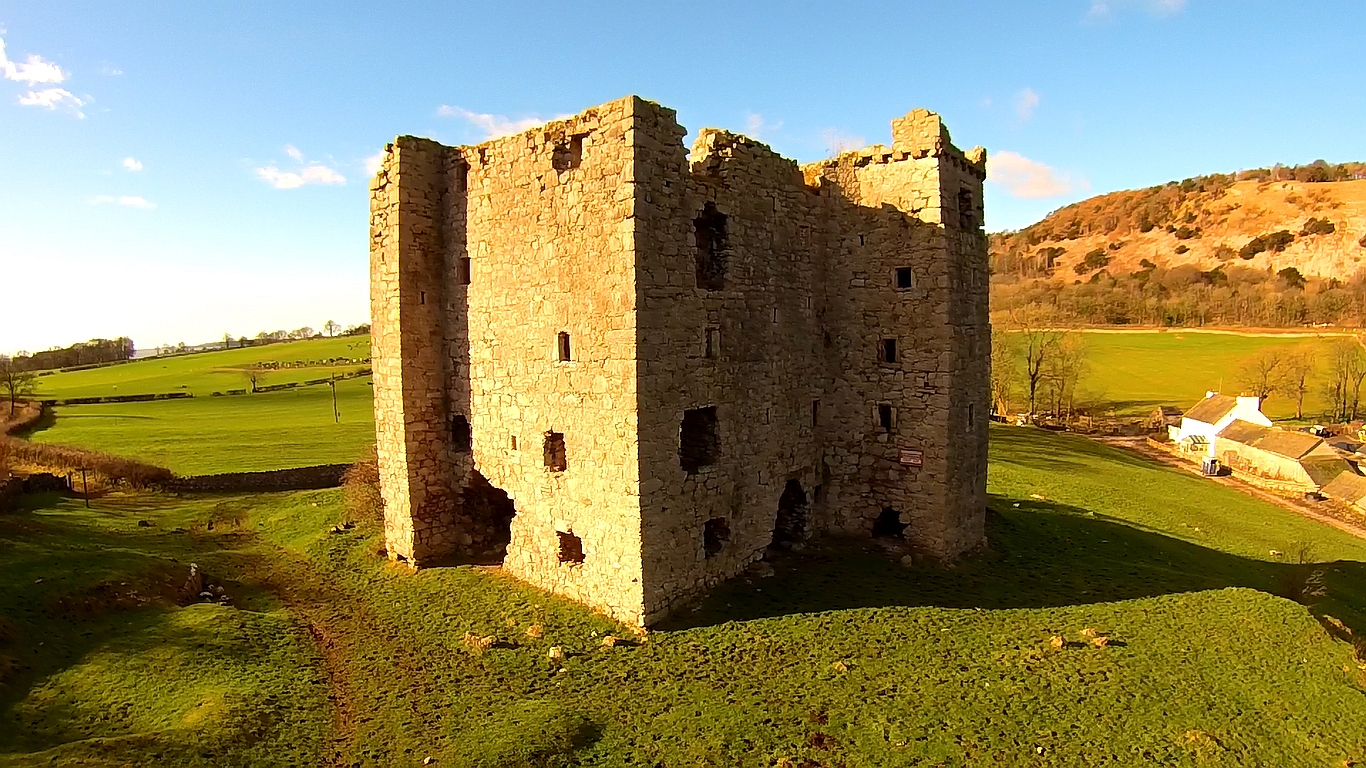
Wikimedia Commons
Peel towers, also spelt pele, are small fortified keeps or tower housesCharacteristic style of Scottish castle building in the form of a tall tower, surrounded by one or more wings in L or Z-shaped floor plans in its later development. built on both sides of the border between England and Scotland, mainly from the mid-14th century until about 1600.[1] They were temporary refuges from cross-border raiding parties, and often attached to manor houses, farms, or churches.[2] Some peel towers were incorporated into later houses, as in the case of Turton Tower
Former manor house incorporating a pele tower, in Turton, Lancashire. in Lancashire, and others were developed into castles.[1]
Usually about 14 metres (46 ft) by 7 metres (23 ft) externally, peel towers were typically two to four storeys in height with thick stone walls, each storey containing a single room.[1] The lower storey was used to shelter livestock, and a narrow staircase or ladder led to the upper floors.[2]
Although of little use against regular forces, the towers did provide a degree of protection against cross-border raiders,[2] but some historians have suggested that the towers, in at least some cases, were built as much as expressions of status and ambition as for defensive purposes.[3]
